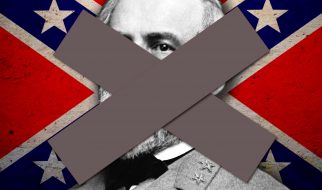The world constantly changes and disparities, however, some top brands seem to keep their leadership position in their industry to this day. Such as Nike, since its creation in 1971 in the USA, the Nike swoosh is still one of the world?s most valuable brand despite of the severe crises.

1.How did Nike build its brand equity?
First, Nike has a well established and strong brand identity with a well recognized and distinguished brand name and brand log, the swoosh. The brand name is easily memorized by costumers.
Brand association:
The core of building the brand equity for Nike brand equity is brand association. Core associations for Nike include: innovative technology, high quality/stylish products, joy and celebration of sports, maximum performance, self-empowerment and inspiring, locally and regionally involved, and globally responsible. What has to be mentioned is that Nike is associating its brand with famous athletic celebrities that have similar personality as the brand; they are achievers, winners, determinant, and accomplishment oriented, nontraditional. Nike is capitalizing on the idolized view of American for their athletic heroes, especially the youth the main target of NIKE. The most famous example for brand association ever was the collaboration between Nike and Jordan, the association that personified Nike as a superior, achiever, successful and amazing top performing brand.
Brand awareness:
Sponsorships, advertising and experience focused retailing (Nike town) are three vivid channels that Nike has applied to enhance its brand image and awareness. Among these strategies, athlete endorsements could be considered as the most significant success of Nike brand.
Nike has been invested millions of dollars to associate their brand names with easily recognizable athletes with the aim of brand image building. For example, since Tiger Woods and Nike cooperated, annual sales for Nike Golf have exceeded to nearly $500 million dollars with an estimated 24 percent growth per year in the first five years of the agreement
Perceived quality:
In addition, one of the most important sources of Nike brand equity is the high perceived quality of the brand not only among athletes but also between the public.Although most of Nike?s market was the public that used their shoes just for walking around yet Nike was committed to design their shoes according to the high standards of professional competition. They listened to athletes and designed shoes that satisfy their needs for high performance and durability. Seeing a winning athlete wearing a Nike shoes in a professional competition authenticated the quality perception in the minds of the customers about the Nike brand. Besides they didn?t follow the trends of other shoe maker like Rebook who used garments in the fabrication of their shoes instead of leather because it is more fashionable although it is less durable, Nike didn?t do so and they stick to using leather fulfilling their commitment to quality.
Brand loyalty:
Nike built a good relationship with consumers. A relationship that started with the beginning of the company when Knight used to speak to athletes using their language and listen to their feedback. He used to meet them in tracks, in high school and in colleges. This strategy created a lot of attachment of athletes to the brand, some sort of brand loyalty. When the company expanded they used a ?Finger on the pulse strategy? where Nike have some of its employees hitting the street finding out what is in the minds of their consumers and following their needs and tracking their brand perception. As for now, Nike+ website. is a great way to create a two-way conversation with consumers. The customers get something that helps them with their fitness regime and helps them interact with friends, while Nike gets valuable information about how customers are using its products.
2.Nike vs. Under Armour?

Nike is clearly the incumbent in this industry; it?s been a market leader for a very long time. But Adidas, Under Armour and Rebook are all big competitors of it. In my point of view, it?s hard to say which brand is better from different aspects.
Take Under Armour as the example. In terms of growth, however, it?s been a different story for the two companies. In the past few years, Under Armour has (on average) exhibited 3X more revenue growth than Nike. That?s a significant figure, and it?s been a cause for concern for Nike loyalists and shareholders.
In terms of athlete partnerships, Nike is easily better. Biggest Athlete Endorsement Deals In Sports History. MJ, KD, LeBron, Tiger, Federer, Cristiano Ronaldo, and many more. UA recently got a deal with Steph Curry, but in the Finals, he just lost to Nike?s LeBron, seemingly offering a temporary stop to all of the Curry hype.
As for brand recognition-wise, Nike wins again. It?s an iconic logo and it?s been around for much longer than UA?s. In my opinion, it?s more aesthetically pleasing as well.
In terms of shoes, Nike has a freaking broad line. Again, pretty much for any sport. UA has seemed to focus on training-focused gear in the past, and has recently been gaining traction in basketball. Performance-wise, the Curry line has been solid. At a relatively cheap price-point of $110?130 for a superstar?s signature shoes, Curry?s have gotten a lot of attention. Nike over the years has continued to hike prices without offering enticing innovation (design or performance-wise) and repelled some buyers. Regardless, Nike has the upper hand here as well. Jordan?s, Kobe?s, KD?s, LeBron?s, and Kyrie?s are all quite decent cash cows. Keep your eye on the Kyrie?s especially, as they?re the cheapest of the bunch, are stylish, and are rising in value as Kyrie?s on-court performance does too.
All in all, compared to other athlete brands, Nike still occupies the market competitiveness.

